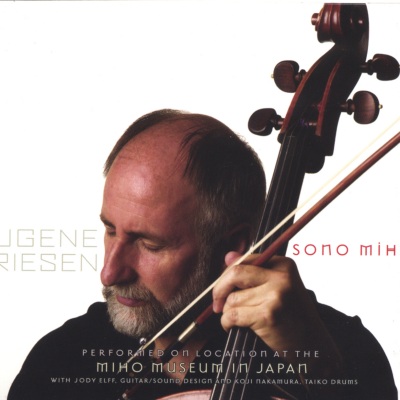
Sono Miho
I had the chance to improvise in one of the world’s architectural treasures, the Miho Museum of Japan. Designed by celebrated architect, I. M. Pei, the Miho Museum is nestled in the mountains above Kyoto. Every detail of the museum is beautiful to the eye, and the design enhances the impact of the art collection in an inspired way. The use of glass in walls and ceilings permits a constant play of light throughout, and many of the chambers have extraordinary acoustics. It was amazing to move from room to room with my cello and feel the different qualities and sounds of each space, the change in acoustics, light, and of course the collection itself: Buddhas from many cultures, ancient tapestries and artifacts, religious icons, carvings, mosaics and much more. As we heard the cello respond to these changes in free play, we imagined returning some day to record, and when the stewards of the museum heard of our idea, they responded enthusiastically. My collaborator, Jody Elff, a sound designer, guitarist and engineer, traveled with me to the Miho Museum. Jody captured a sound of the cello I’ve never heard before, rich, alive and sonorous, but more, he also captured the essence of the museum’s acoustics. While the music conveys the spirit of the rooms, I feel the recording reflects the experience of being in the place. It was not necessary to add any artificial reverberation to the recordings, what you hear is all Miho. The album includes several freely improvised pieces which are good examples of my best playing. We also recorded two pieces from the cello suites of J. S. Bach: the Prelude in D Minor, and the Sarabande in C Minor. To express a sense of the ancient, we recorded a beautiful fourth century plainsong, Te Lucis, which you hear first with my voice, and which recurs at several points. Jody contributes sounds of his electric guitar played with an “e-bow,” a device which sustains the sound of the guitar in an angelic way. Jody also used a laptop to create beautiful sounds and pieces from recordings made in the museum. We were fortunate also to have the collaboration of a wonderful taiko drummer from Japan, Koji Nakamura. The taiko are large drums and Koji brought two which activate the acoustics of the museum in a distinctive way. Koji and I fashioned two duets, and he improvised several dramatic fanfares which are featured as interludes. The graphic design of Sono Miho, by David Brier of DBD International, is something which also reflects the elegance and serenity of the museum. The package includes some wonderful photos of the interior and exterior, and is truly a visual equivalent to the music.
